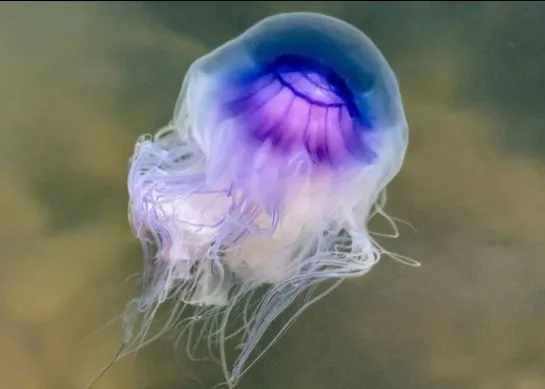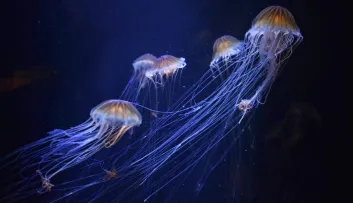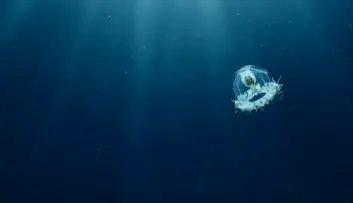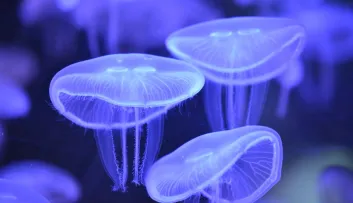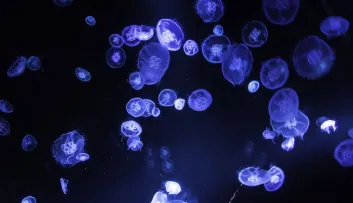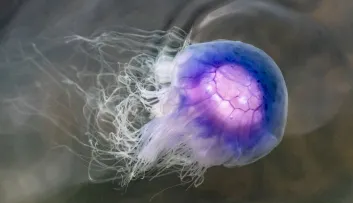Biodiversity 2mn
Jellyfish
Which jellyfish can be found along our coasts?
From the North Sea to the Mediterranean, the jellyfish can leave burning memories for swimmers who come into contact with them.
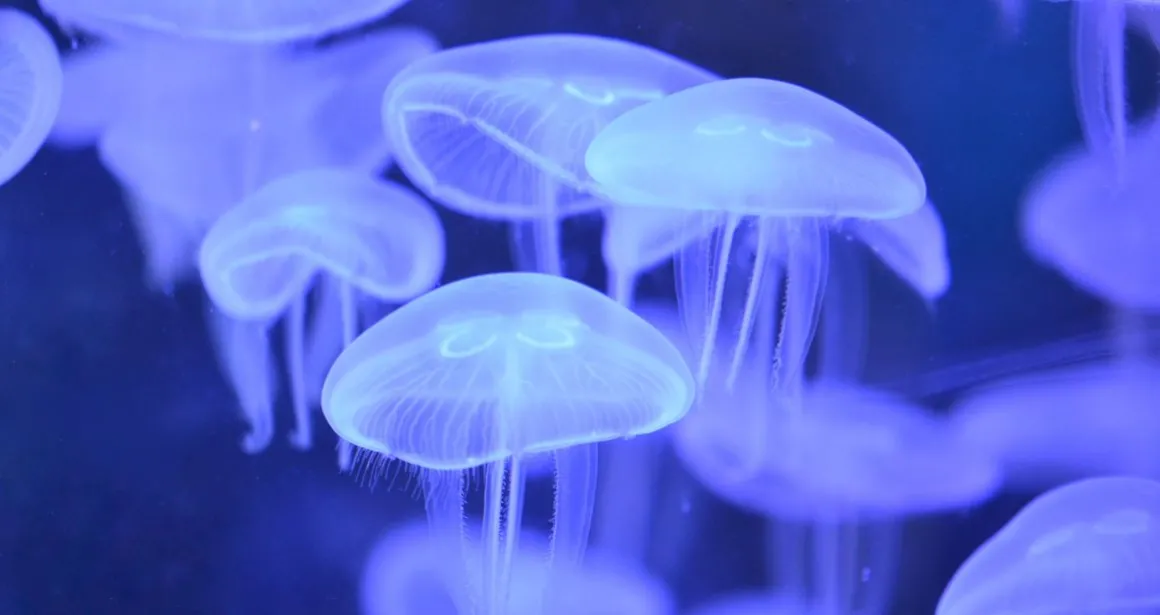
Present in the seas off the French coast, here are the species of jellyfish that regularly appear on our coasts.
Pelagia noctiluca, the mauve stinger pelagic jellyfish
This mauve jellyfish, with a blue and pink bell, has the worst sting. Above all present in the warm waters of the Mediterranean, they can also be found in the Atlantic. With their 60cm-long tentacles, they can inflict painful burns on swimmers.
Common in the open sea and swimming close to the surface, they can come close to the coast pushed by the currents and the wind.
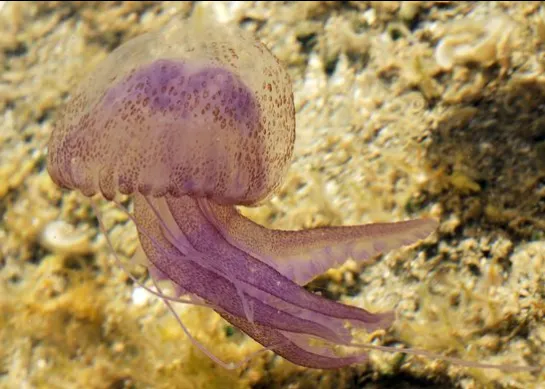
Chrysaora hysoscella, the compass jellyfish
Compass jellyfish have a very bad sting, but not as bad as that of the mauve stinger. They can be found in the Mediterranean and in the eastern and northern Atlantic, in the Channel and the North Sea, often in the spring.
Their filaments can be as much as two metres long. Their bell has a diameter of between 10 and 30 cm and is 4 to 6 cm high.
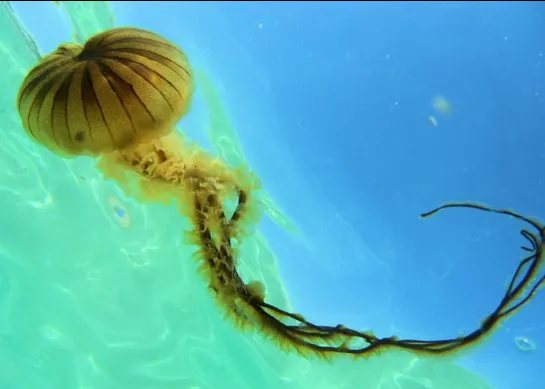
The most widespread: Aurelia aurita, the common jellyfish
Present in all of the world’s oceans and seas, except in the very cold waters around the poles, the common or moon jellyfish can frequently be found off the French coasts. They don’t have a very bad sting.
Often on the surface or in shallow waters, they live out in the open sea and also close to the coast. They can also be found in harbours and estuaries.
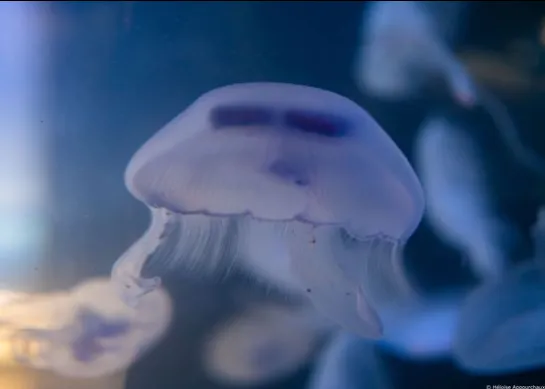
Rhizostoma octopus, the barrel or dustbin-lid jellyfish
The colour of the barrel jellyfish varies between yellow, brown, blue and green. They do not have any tentacles and are inoffensive. Its large bell can measure between 30 and 60 cm, sometimes as much as one metre.
They are found in the Mediterranean, as well as in the North-East Atlantic, the Channel and the North Sea. They can often be seen in lagoons and estuaries.
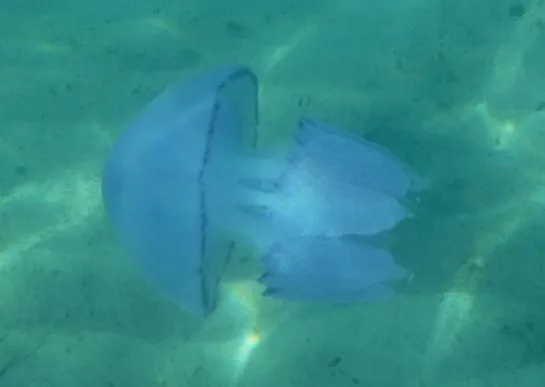
Cyanea lamarckii, the blue or bluefire jellyfish
Present in the Atlantic, the North Sea and the Channel, this jellyfish has many tentacles that can be more than 25 times longer than its diameter of 15 to 30 cm.
They have quite a bad sting, and swimmers should be wary of their long tentacles, as fine as hair and invisible in the water.
This open-sea jellyfish can sometimes be found along the coast, carried by the currents. They appear between May and October.
